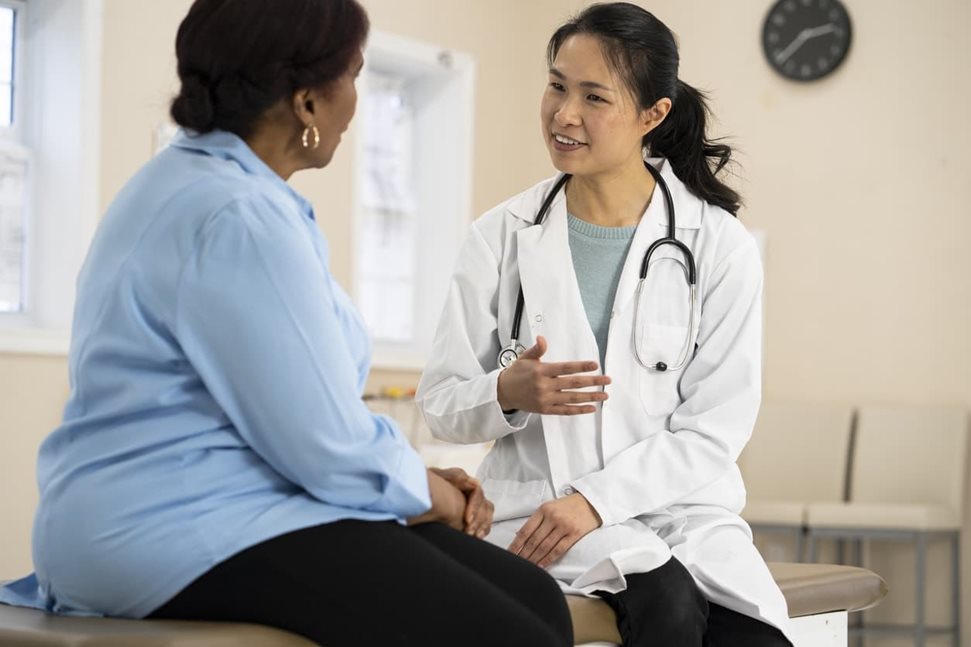A Menopause Expert’s Guide to HRT

We spoke to menopause coach Catherine O’Keeffe about what women can expect during this transitionary period in their lives. Now, we’re following up with Catherine to discover more about Hormone Replacement Therapy (HRT); what it means, how it affects the body and the various risks and benefits associated with it.
One Size Doesn’t Fit All
To begin, Catherine notes that the decision to opt for HRT is a personal one, and since no two women are the same, it’s certainly not a ‘one size fits all’ approach. "I’ve found that many women thrive on HRT”, she begins, “while others can’t tolerate it. Either their bodies don’t respond well, they haven’t found the right form, or they simply don’t want it.” Regardless of whether it’s something you want to progress with, it’s important to understand how the treatment works within the body, so that you can make an informed decision when it comes to finding the right solution for you.
Understanding HRT
So, what exactly is HRT, and how is it administered? “What you’re basically doing”, Catherine explains, “is replacing the hormones that the body loses during menopause - the primary ones being oestrogen and progesterone.” The aim then, is to treat the symptoms of menopause; hot flushes, anxiety and a lack of energy, for example. “When a woman goes to her GP, they’ll generally start her on both oestrogen and progesterone, and try to get the balance right.” However, whether a woman has had a hysterectomy will also dictate her treatment. “If a woman has a uterus”, says Catherine, “she must have progesterone and oestrogen together, as progesterone protects against endometrial hyperplasia (thickening of the womb lining) which can be a precursor to endometrial cancer. If she’s had a hysterectomy, she just needs oestrogen.” In some cases, a low dose of testosterone is also administered. “There’s lots of research being done on this at the moment”, says Catherine. “If energy levels and libido aren’t improving, an experienced GP might look at incorporating testosterone into her treatment.”

Oral Vs Transdermal
HRT is administered orally or via the skin, through a patch, gel or spray. Your GP will help figure out the best option for you, but whether you’re still menstruating is also an important consideration. “Menopause is actually the 12-month anniversary of the end of your cycle”, Catherine explains. “So, you could be having all the symptoms – anxiety, hot flushes – and yet your period is unaffected.” If a woman is still menstruating, she’ll generally be prescribed ‘sequential’ HRT; this means that oestrogen is used continually and progesterone is used for only some days of the moth unless the woman has a mirena coil in place. Oestrogen can be administered transdermally (as a patch, gel or spray) with a separate progesterone or as a combined patch or tablet. If her periods have stopped oestrogen and progesterone are used every day either as separate or combined preparations.
Benefits and Risks
The main benefit of HRT is the treatment of menopausal symptoms, which, as Catherine explained previously, can be incredibly difficult to live with. It’s also shown to be good for bone health, as it protects against osteoporosis, and long term heart health. There are some small increased risks associated with HRT too; including breast cancer with some types of synthetic progesterone in HRT and the risk of blood clot but this is only with oral oestrogen. However, Catherine notes that there are lots of contributing factors when it comes to risk assessment, including age, lifestyle and type of treatment. “We know for example that the oral form of HRT will pose more risks for deep vein thrombosis than transdermal”, she says. “That’s why the first port of call is usually transdermal.”
Find a Treatment that Works for You
These are just some of the factors to consider when choosing the right treatment for you. If you are struggling with menopausal symptoms, don’t suffer in silence. Make an appointment to speak to your GP and explore all options available. "I’ve worked with hundreds of women”, says Catherine. “Some chose HRT, others used holistic therapies, while many are availing of both. The important thing is that one size doesn’t fit all.”
You can discover more about the benefits we offer to help you live a healthier, more positive life during peri-menopause and menopause here.
Created June 2021.